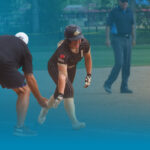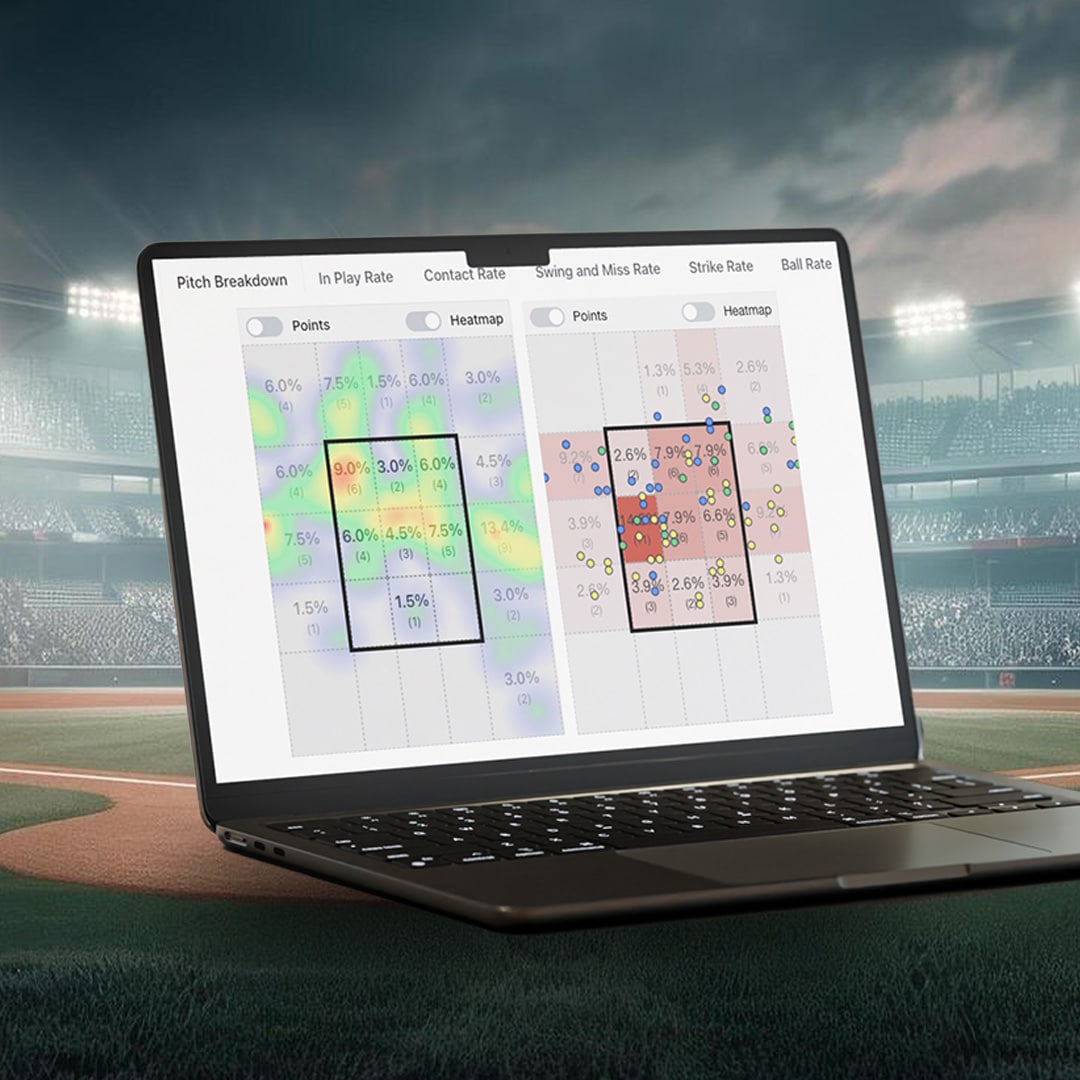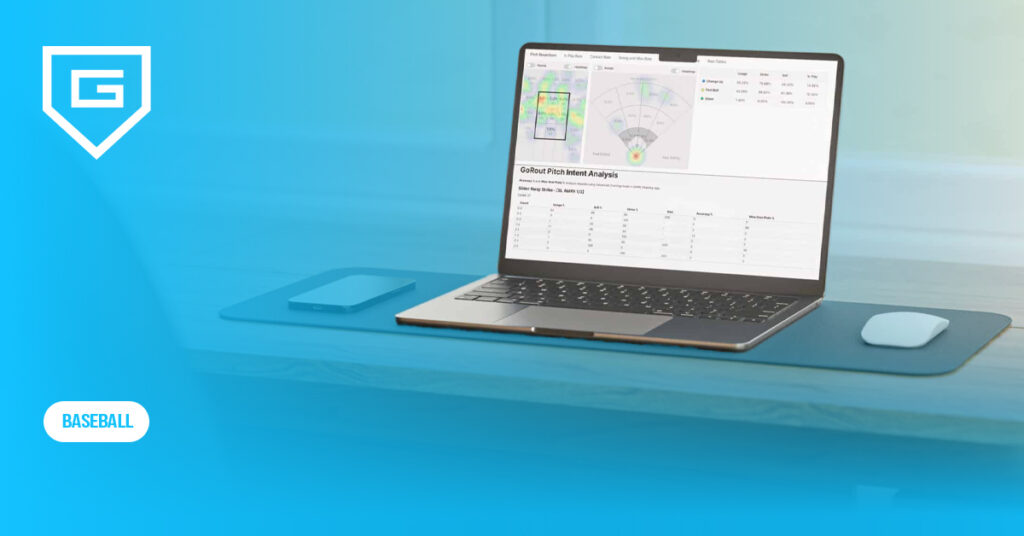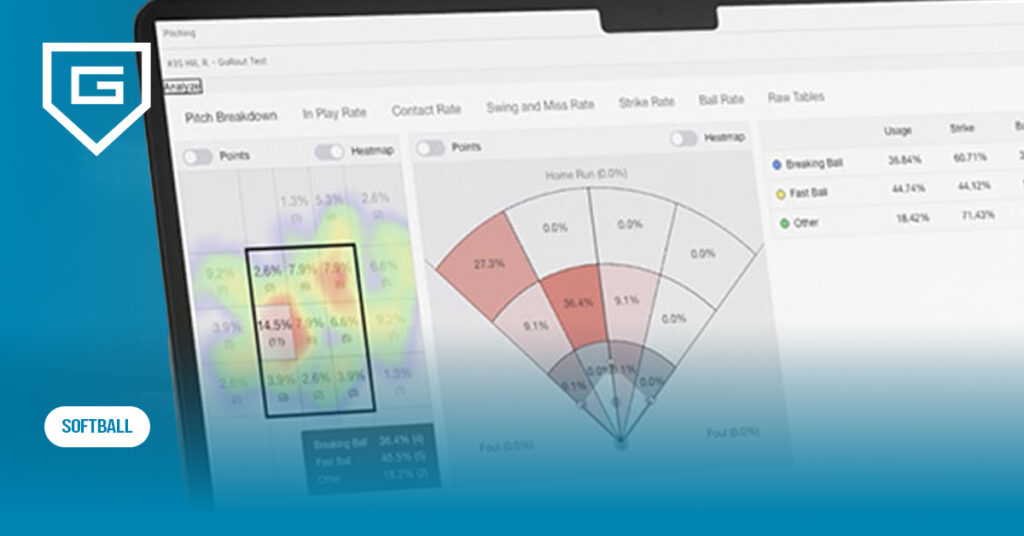Top Pitching Training Aids to Improve Velocity and Arm Strength
Reading Time: 10 minutes
Reading Time: 10 minutes
Every pitcher wants a stronger arm and more heat on the mound. Pitching training aids build up your arm muscles and promote proper mechanics, helping you generate explosive power for faster pitches.
The trick is figuring out which tools help and how to use them safely. Not every gadget is worth your time, and some can do more harm than good if you’re not careful.
This guide will take you through some of the best baseball pitching aids out there right now. You’ll find out which products work, how to steer clear of typical training blunders, and get tips on integrating these tools into your practice routine.
Current Trends In Pitching Training Aids
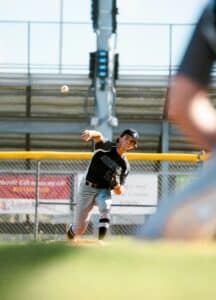
Pitching training tools powered by tech are everywhere. Smart sensors track your arm angle, release point, and velocity in real time while you’re on the mound.
Recovery is just as important as performance. New training aids blend injury prevention with performance boosts.
Data collection tools keep getting more popular. You can track every pitch with pocket radar guns and apps that break down your mechanics.
People love multi-purpose equipment that saves space and cash. Some new aids combine strength, mechanics, and recovery in one device.
Smart systems link up to mobile apps. These platforms store your progress and suggest custom pitching training routines based on how you’re doing.
Resistance-based tools are popular with younger players. These aids help build arm strength without putting too much strain on growing joints.
More players want mound-specific training. Portable mounds let them practice real mechanics at home.
Categories Of Pitching Training Aids

Pitching aids fall into five main categories, each targeting a different piece of your game.
Throwing tools help you refine your arm action and mechanics. Weighted baseballs work on your arm strength and mobility. They can improve mechanics and control by focusing on proper form. These tools also clean up your arm path and take stress off your arm.
Strength training equipment builds the muscles that matter for pitching. Resistance bands hit your shoulder and scapular muscles. Shoulder tubes and spheres also help with stability.
Recovery tools help your body bounce back after tough sessions. Electrical stimulation devices use electrical pulses to boost blood flow. Percussion massagers give your sore muscles a deep massage.
Activation equipment gets your body ready to throw. Medicine balls and water bags fire up your rotational power. These tools wake up your lower half before you start pitching.
Bullpen training aids sharpen your mound performance. Pocket radars give you instant velocity feedback. Baseball equipment like nets and portable mounds lets you practice wherever you want.
The best trainer depends on what you need and your current skill level. Softball players can use most of these tools.
Benefits Of Training Aids For Pitching
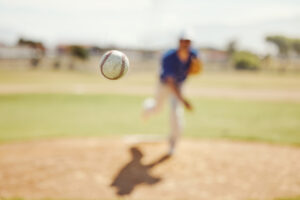
Training aids change how your players develop. They target weak spots and build consistent mechanics, helping them throw strikes with more power and less risk of injury.
Improved velocity and arm strength
Weighted balls and resistance bands directly build arm strength and boost velocity. They create progressive overload, locking in muscle memory for faster throws.
While the weight forces you to lock in your mechanics, it also helps you get stronger and throw harder.
Power comes from controlled resistance training. That’s the base for velocity gains all season long.
Better mechanics and pitching efficiency
Training aids fix bad mechanics by giving you instant feedback. You start moving cleaner, which takes pressure off your arm.
Better mechanics mean more control and sharper pitch location. Sticking with these tools builds muscle memory. That way, your form holds up even when the game’s on the line.
Real-time feedback for faster learning
Pocket radars and velocity trackers give you instant performance data after each throw. You can tweak your technique right away based on what you see.
This feedback speeds up your progress compared to just guessing. You know exactly how changes affect your velocity and accuracy.
Baseball pitching drills get more productive when you track your numbers. Small gains add up to big results over time.
Improved recovery and injury prevention
Recovery tools boost blood flow to tired muscles. That means you heal faster and feel less sore between sessions.
Good recovery keeps your arm healthy through tough training stretches. You can stick to your routine without getting sidelined by overuse injuries.
Injury prevention tools help you stay on the field. Healthy arms throw harder and with way more control than banged-up ones.
Increased confidence and game-day performance
Training aids give you confidence because you see real improvement in practice. When your velocity and accuracy go up, your mental game follows.
Practicing with solid tools gets you ready for game day. You trust your stuff when it matters most.
Better performance in games comes from putting in the work with the right baseball coaching tools. The quality of your practice shows up when the lights are on.
Potential Risks And Misuse Of Pitching Aids for Training

Pitching training aids can cause injuries or bad habits if you misuse them. The wrong equipment, too much use, or poor supervision can seriously set you back.
Overuse injuries from improper training
Weighted balls put a lot of stress on your elbow if you throw them wrong. Your arm needs time off between sessions.
Using aids every day without breaks leads to overuse injuries. Young pitchers are especially at risk. Their bodies just aren’t built for that kind of stress yet.
Relying too much on technology over fundamentals
Training aids can turn into crutches if you lean on them too much. They help at first, but eventually you need to focus on real skills.
Focusing on the gadget instead of your mechanics can lock in bad habits. That’s a pain to fix later.
Basic pitching skills matter more than any fancy tool. Get the fundamentals down before adding extras.
Using the wrong aid for age or skill level
Every pitcher needs different equipment depending on age and ability. What works for college players might hurt younger kids.
Heavy-weighted balls are risky for youth pitchers. Their arms can’t handle the extra load safely.
Don’t jump into advanced tools too soon. Start simple, then ramp up as you get better.
Poor supervision and lack of coaching guidance
Training without a good coach leads to problems. You need to watch your players and catch mistakes early.
Build programs that fit your team. Professional guidance makes sure they use aids right. That keeps them safer and gets you better results.
Low-quality equipment leads to ineffective results
Cheap equipment breaks fast and gives you bad feedback. Poor calibration means you’re not even getting accurate numbers.
Defective aids can be dangerous. Always check your gear before using it.
Quality training aids might cost more, but they last and give you better, safer sessions.
How To Select The Best Pitching Training Aids
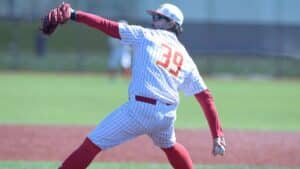
Pick training aids that match your weaknesses and goals. Zero in on your biggest issue first, whether it’s velocity, control, or arm health.
Figure out what you need to fix most. Whether you’re struggling with command or want more speed, your training aid should go after your weakest spot.
Beginners and advanced players need different tools. Young pitchers should stick with basic mechanics gear. Experienced throwers can handle more complex velocity aids.
Training aids run anywhere from $10 resistance bands to $500 weighted ball kits. Start with affordable essentials. Make sure you have enough space to use everything safely.
Cheap gear breaks fast and might even hurt you. Check out reviews from other players and coaches. Quality tools last longer and work better.
Ask other coaches or veteran players what works. A lot of baseball training equipment, like GoRout Diamond, has a solid reputation with college and pro teams.
How GoRout Diamond Improves Your Team Practices
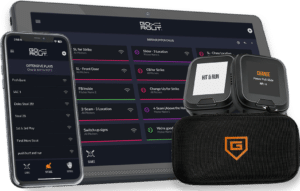
GoRout Diamond combines the latest sports coaching technology with a reliable communication system and intuitive baseball play wristbands.
Coaches and players can act with more confidence, and teams at all competitive levels see real results with its flexible setup.
Here’s why this baseball pitch calling system is the best choice for your team.
Streamlined coaching operations

GoRout Diamond for baseball and softball allows coaches to make quick, targeted decisions. You can customize signals based on game situations.
The web interface is simple to learn, so coaches can focus on building playbooks, not learning technology.
One tap on the mobile app sends pitch calls, defensive alignments and strategic instructions to players, eliminating hand gestures or written notes. It connects to individual players or the entire roster in an instant.
This electronic pitch calling system operates on secure cellular networks and doesn’t require WiFi or additional field equipment.
Devices are game-ready with minimal setup for practices or games. Adding coverage for larger rosters is seamless with device additions.
Improved player experience
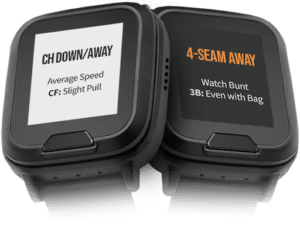
Players get precise, encrypted and immediate guidance through comfortable wearable technology.
Each pitch calling device displays play information clearly in all lighting conditions – bright sun, stadium lights or overcast skies. Signal confusion and missed communications are a thing of the past.
Weather-resistant construction means these baseball communication devices work in extreme heat, rain or cold. Quick access controls allow for rapid display adjustments so critical instructions are always visible.
GoRout delivers position-specific messaging to the right players. Each player knows their assignment, and the intuitive design reduces technology learning time and maximizes playing time.
Key benefits for practice and game use

GoRout Diamond offers more than just speed and security:
- All communications are encrypted with four-way privacy screens to protect team strategies from unauthorized access.
- The platform provides pitch intention analysis, live charting and game pattern evaluation.
- Devices last 12+ hours on a charge with under one hour recharge cycles, perfect for long games or doubleheaders.
- GoRout offerings start with single NFHS-approved coach-to-catcher units and go up to full team configurations. Solutions are program-specific and budget-friendly.
- Every device has a 100% breakage warranty (excluding loss or theft), so your investment is secure for the long haul.
- GoRout Diamond is approved at the NCAA, NFHS high school and youth levels (where allowed) for seamless multi-level implementation.
It saves time and reduces mistakes, so you don’t make costly errors in the heat of the moment.
Performance studies are available for teams who want to see the numbers.
Want to get GoRout Diamond for your team?
Contact us for a quote or visit our web shop.
Implementing Training Aids In Your Pitching Practice
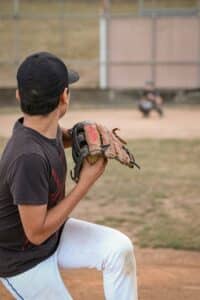
Training aids can speed up skill development, but they only work if you use them with structure and consistency. A smart approach helps you get results while keeping your arm healthy.
- Start with basic tools before moving to advanced options to give your practice structure.
- Warm up with weighted balls and resistance bands for 10–15 minutes before pitching.
- Break training into short, focused sessions that target one skill at a time.
- Introduce new tools gradually in team settings, starting with simple gear.
- Use training aids three to four times a week, with lighter tool work on off days.
- Track progress by recording velocity and accuracy changes to adjust your plan.
- Maintain proper form to stay safe, and keep communication open between coaches and players.
With structure, consistency, and safety, training aids can boost performance without increasing injury risk.
Common Mistakes To Avoid With Pitching Training Aids
Poor mechanics degrades performance more than any training aid can enhance it. Avoid these traps to keep your pitching power on track.
- Rushing your delivery for speed ruins timing and kills power from your lower body.
- Losing balance or alignment during your leg lift wastes energy before the throw.
- Relying only on your arm limits velocity since most power comes from the legs, hips, and core.
- Training without a clear plan makes progress random, so set goals and track results.
- Overtraining your arm prevents recovery and increases injury risk, so follow a schedule.
- Choosing the wrong training aids slows development because not every tool fits every pitcher.
- Skipping recovery with poor sleep or nutrition undermines muscle growth and velocity gains.
By fixing these mistakes, pitchers can unlock more velocity safely and make every training session count.
Conclusion On Pitching Training Aids
Training aids work best when you choose the right tools for your goals.
Weighted balls improve arm strength and throwing mechanics. Resistance bands build shoulder stability. You don’t need every tool out there. Start with one or two that target your biggest weaknesses.
Consistency beats perfection every time. Using aids 3 times a week is better than daily intense sessions that burn you out. Remember, training aids support your practice. They don’t replace proper coaching or good throwing mechanics.
GoRout Diamond takes your practice efficiency further by getting every training instruction to players instantly and clearly.
When combined with training aids, this communication technology gives coaches real-time feedback and adjustments, maximizing the value of every practice session.
Get a quote or visit our web shop to see how technology can improve your coaching.
FAQs About Pitching Training Aids
What is the best way to practice pitching?
Stick to your routine and focus on what needs work. Figure out if you need to boost velocity, control, or mechanics. Mix in mound work, flat-ground throws, and training aids.
Use weighted balls for arm strength. Try nets when you don’t have a catcher. Work on mechanics with towel drills at home.
Track your progress with a radar gun or even your phone camera. Alternate tough days with lighter recovery sessions.
Do pros use training aids?
Most pros mix several aids into their routine. Major leaguers use weighted balls, resistance bands, and recovery tools every day. They care about staying healthy just as much as they do about throwing harder.
How fast should a 12-year-old pitcher be throwing?
Most 12-year-olds throw 50-60 mph, sometimes up to 65 mph. Focus on good mechanics first, not just speed. Bad form leads to injuries.
Kids develop at different rates. Some throw harder early, some take longer. Accuracy and control matter more at this age.
Keep pitch counts reasonable to protect young arms.
What equipment is best for pitchers?
Start with resistance bands, weighted balls, and a quality pitching net. These cover the basics: building arm strength, refining mechanics, and keeping practice regular.
Bring in a portable mound if you want sessions to feel more realistic. Foam rollers help with recovery, especially as you start throwing harder.
Some people like radar guns to check their progress, but that’s optional. Pick gear that matches where you’re at.
Beginners just need the essentials, while advanced pitchers might want more specialized products.

